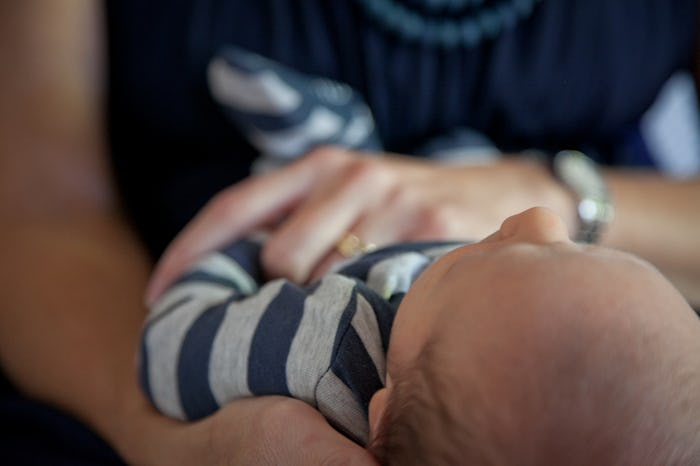News

34-Week Old Fetuses Can Respond To Faces
Those efforts to connect with your baby in the womb don't go unnoticed. Between playing them music, talking to them, and reading them books, it seems as if sometimes, trying to connect with your baby in the womb is a little silly — because how much are they paying attention, really? Turns out, they might be paying more attention than you'd think. New research has found that 34-week old fetuses can respond to faces in the womb, making those attempts to connect a little more worth it.
Let's be real, the times your partner has shoved their face in front of your belly trying to talk to the unborn baby can get a little annoying — even baby bumps need their space. But as it turns out, the bump-to-face thing might be a good thing after all, maybe. A recent study conducted found that fetuses in the third trimester respond to and focus on patterns of light that resemble human faces. When faced with the inversion of the same pattern of light, the fetus did not respond at all. These findings mean that the human fetus has the ability to and capacity to process perceptual information, and according to NPR, this is a significant advancement in understanding how sight is developed. Pretty cool.
While it has been known that fetuses can respond to sound, it has been long debated how much fetuses can actually see. According to Parents, around 33 weeks, babies can begin to see dim shapes, or patterns of light like this recent study found. It is important to note that this is 34-old week fetuses we're talking about. These fetuses are in their third trimester and almost full term. Therefore, they should be a little more advanced in their development.
Just because this study found that babies can respond to patterns of light with the parameters of a face doesn't mean they can actually tell the difference between faces. They can't. Vincent Reid, professor of psychology at Lancaster University in Britain and the lead researcher of the study told NPR:
They can't see their mother's face. They can't see their father's face or someone else's face. And we don't want to recommend that people shine bright lights into the uterus because that could be aversive. It could be damaging, potentially, if it was too bright.
Still, this progress in knowing how fetuses develop and is still pretty exciting, even if, according to Gizmodo, it is known that a baby's vision continues to develop long after birth. According to Parents, eye sight can't really be measured until a child is at least 3 years old. But, Parents reports that babies are able to see distances with clear vision by the time that they're 6 months old.
This research is exciting, as people now know more about fetal development. But it does not mean that babies actually know what faces are or what they look like — just that they can respond to them.